The Yuanmingyuan Ruins Park is located at No. 28 Tsinghua West Road, Haidian District, Beijing, and is a national 5A-level cultural tourism scenic area. Composed of three gardens: Yuanmingyuan, Changchun Garden, and Qichun Garden, the total area of the ruins is approximately 352 hectares, including about 140 hectares of water surface and around 160,000 square meters of building area. It combines the grandeur of northern imperial gardens, the seclusion and elegance of Jiangnan private gardens, and the artistic styles of Western gardens, known as the "Garden of Gardens".
History and Culture
Yuanmingyuan was first built in the 46th year of the Kangxi reign (1707). It was a large imperial palace garden constructed and managed by six emperors of the Qing Dynasty—Kangxi, Yongzheng, Qianlong, Jiaqing, Daoguang, and Xianfeng—over more than 150 years. After Emperor Yongzheng ascended the throne, he began planning the expansion of Yuanmingyuan and moved the power center of the Qing Dynasty from the Forbidden City to Yuanmingyuan. Emperor Qianlong further carried out large-scale expansion and renovation of the imperial garden, and Yuanmingyuan reached its peak during the Qianlong period.
In 1860, Yuanmingyuan was brutally looted and burned down by the Anglo-French Allied Forces. Although there were minor renovations and repairs during the Tongzhi and Guangxu reigns, the scale was limited. In 1900, the Eight-Power Allied Forces captured Beijing, and Yuanmingyuan was looted again, with the remaining buildings completely destroyed. During the Republic of China period, Yuanmingyuan suffered repeated looting by Beiyang warlords and bureaucrats, as well as deliberate and organized destruction by the authorities of the Beiping Special Municipal Government, eventually reduced to ruins.
After the founding of the People's Republic of China, the people's government attached great importance to the protection of the Yuanmingyuan ruins. In 1988, the Yuanmingyuan Ruins Park was announced as a national key cultural relic protection unit and officially opened to the public. In 2010, it was listed in the first batch of national archaeological site parks. In 2019, the Yuanmingyuan Scenic Area was designated as a national AAAAA-level tourist attraction.
Main Attractions
Western-style Buildings (Xiyang Lou)
It is a group of European-style garden buildings in Yuanmingyuan, mainly composed of attractions such as Xieqiqu (Harmonious Wonder), Huanghuazhen (Yellow Flower Maze), Yangquelong (Birdcage), Fangwaiguan (Outlook Beyond), Haiyantang (Hall of National Peace), and Yuanyingguan (Distant View Pavilion). With a unique architectural style, it adopts a large number of Baroque and Rococo elements, and is a precious heritage of cultural exchange between China and the West.
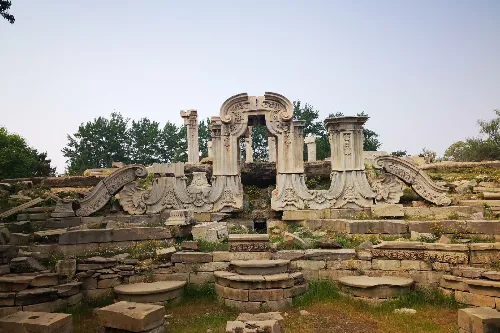
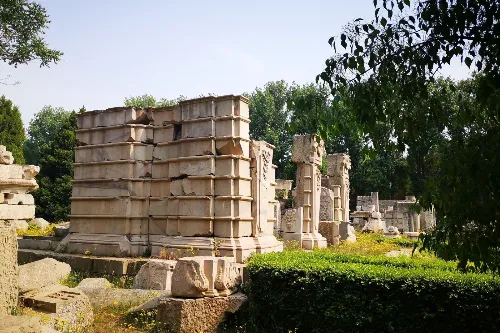
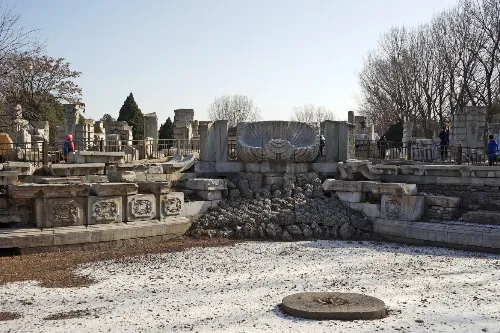
Great Waterworks (Dashuifa)
As the main scenic spot of the Western-style Buildings area, it is an artificial fountain characterized by a large number, grand momentum, and unique conception. The fountain group of Dashuifa consists of multiple fountains and waterworks devices, which were very advanced water conservancy projects and garden landscapes at that time.
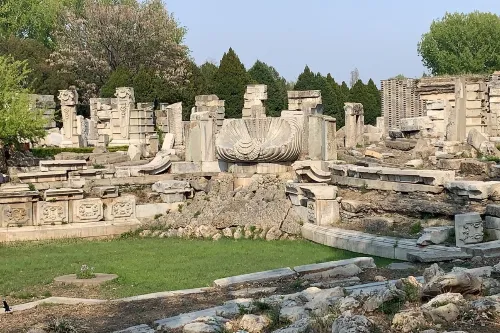
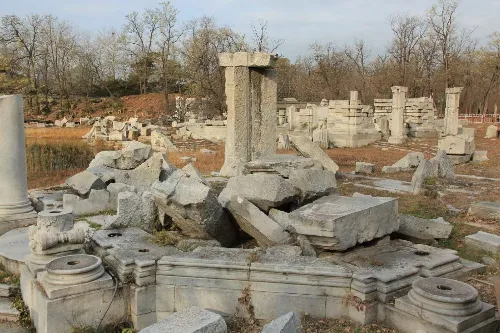
Fuhai Lake
It is the largest lake in Yuanmingyuan, with a vast water area and beautiful surrounding scenery. The Fuhai Lake scenic area includes attractions such as Jiajing Mingqin (Mirror and Lute), Zaoshen Yude (Purify Body and Cultivate Virtue), Kuoran Dagong (Broad and Impartial), Pinghu Qiuyue (Autumn Moon over the Calm Lake), Hanxu Langjian (Clear Reflection of the Sky), Jiexiu Shanfang (House Embracing Beautiful Mountains), Fanghu Shengjing (Wonderland of Fanghu), and Pengdao Yaotai (Fairy Platform on Penglai Island). It attracts numerous tourists with its rich water scenery and unique garden landscapes.
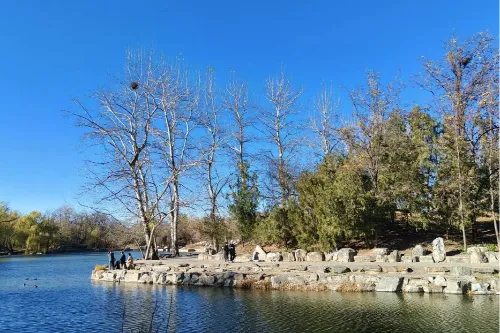
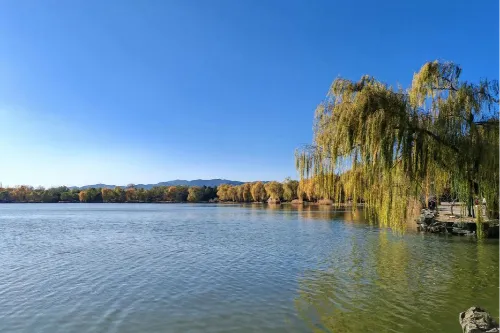
Jiuzhou Qingyan (Nine Continents in Peace)
It is a group of palace buildings in Yuanmingyuan, where the emperor handled state affairs and lived. The architectural style here is solemn and elegant, reflecting the majesty and momentum of the imperial family.
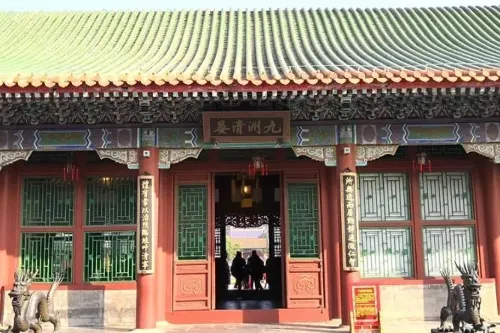
Recommended Tour Route
Recommended route: First, visit the Western-style Buildings ruins to experience the glory and vicissitudes of the past; then go to the Yuanmingyuan Panoramic Sand Table to understand the overall layout of Yuanmingyuan; next, visit the Yuanmingyuan Exhibition Hall to deeply learn about the history and culture of Yuanmingyuan; then stroll around Fuhai Lake to enjoy the lake and mountain scenery; finally, tour the Jiuzhou Qingyan ruins area to imagine the imperial life scene in the past. The whole journey takes about 3-4 hours on foot, and the pace can be adjusted according to physical strength.
Travel Tips
- It is recommended to enter the park early to avoid the tourist peak and better enjoy the attractions.
- You can rent an audio guide (20 CNY per unit) or follow the tour guide team in the park (about 100 CNY per group) to deeply understand the history and culture.
- Prepare comfortable shoes, as the park is large and the whole journey takes about 3-4 hours on foot.
- Cherry blossoms and peach blossoms can be enjoyed in spring (April-May), and ginkgo and goldenrain tree leaves can be viewed in autumn (October-November).
Notes
- Abide by the park regulations, do not climb cultural relic ruins or touch exposed remains.
- Protect the environment, put garbage into designated trash cans, and do not litter at will.
- There are guardrails around Fuhai Lake, do not climb over or approach the water's edge to ensure safety.
- Smoking and open flames are prohibited in the park to respect the historical and cultural atmosphere.
- There are many tourists in the Western-style Buildings ruins area, please avoid others when taking photos to prevent crowding.
Transportation
- Bus: Take bus No. 331, 432, 498, 508, 579, 664, Te 19, etc., and get off at Yuanmingyuan South Gate Station.
- Subway: Take Subway Line 4 and get out at Exit B of Yuanmingyuan Station.
Opening Hours
January 1 – March 15, October 16 – December 31: 7:00 – 19:30, ticket sales stop at 17:30.
March 16 – April 30, September 1 – October 15: 7:00 – 20:00, ticket sales stop at 18:00.
May 1 – August 31: 7:00 – 21:00, ticket sales stop at 19:00.
Tickets
Ticket types include main entrance ticket, ruins ticket, panoramic sand table exhibition ticket, and all-inclusive ticket, as follows:
- Main entrance ticket: 10 CNY per person, for visiting all open areas except the Western-style Buildings ruins area and the panoramic sand table exhibition.
- Ruins ticket: 15 CNY per person, for visiting the Western-style Buildings ruins area.
- Panoramic sand table exhibition ticket: 10 CNY per person, for visiting the panoramic sand table exhibition.
- All-inclusive ticket: 25 CNY per person, including visits to all the above areas.
You can search the official WeChat public account "圆明园遗址公园" to get the latest news or buy tickets online.
Online Booking
Click here to jump to the Trip.com ticketing platform for ticket purchase.


